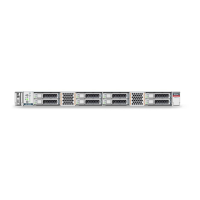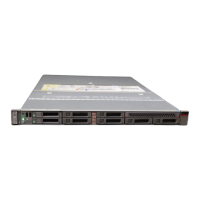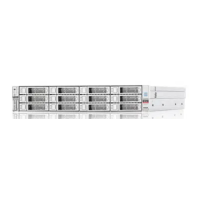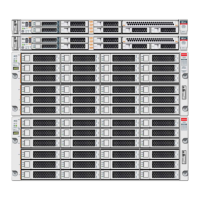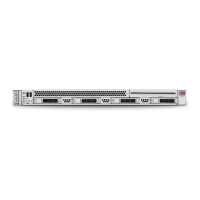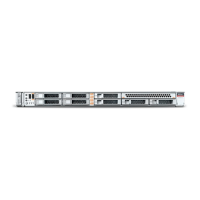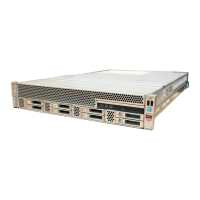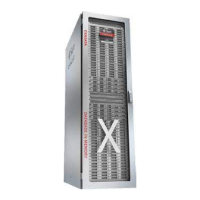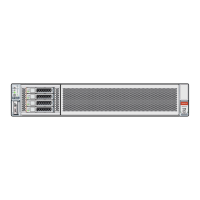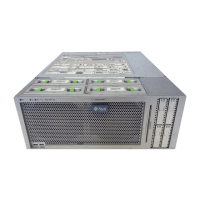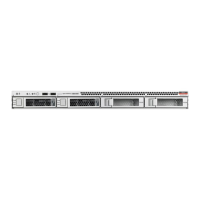Troubleshoot Hardware Faults Using the Oracle ILOM Web Interface
There are two status indicators (LEDs) on each port. These indicators are visible from the rear
of the server.
Status Indicator
Name
Location Color State and Meaning
RJ-45 10GbE Ports
Activity Top left Green ■ ON – Link up.
■ OFF– No activity.
■ FLASHING – Packet activity.
Link speed Top right Bi-colored:
Amber/Green
■ OFF – 100BASE-T link (if link up).
■ Green ON – 1000BBASE-T link.
SFP+ 10/25GbE Ports
Activity Top Green ■ OFF– No activity.
■ FLASHING – Packet activity.
Link Speed Bottom Bi-colored:
Amber/Green
■ OFF – No activity.
■ Amber ON – 10GbE link.
■ Green ON – 25GbE link.
Motherboard Status Indicators
The motherboard contains the following status indicators (LEDs).
Status Indicator Description
DIMM Fault Status
Indicators
■ Each of the 24 DIMM sockets on the motherboard has an amber fault status indicator
(LED) associated with it.
■ If Oracle ILOM determines that a DIMM is faulty, pressing the Fault Remind button on
the motherboard I/O card signals the service processor to light the fault LED associated
with the failed DIMM.
■ For more information on DIMM fault status indicators and the location of the Fault
Remind button, see “Servicing the DIMMs (CRU)” on page 97.
Processor Fault
Status Indicators
■ The motherboard includes a fault status indicator (LED) adjacent to each of the two
processor sockets.
■ These LEDs indicate when a processor fails.
■ Pressing the Fault Remind button on the motherboard I/O card signals the service
processor to light the fault status indicators associated with the failed processors.
■ For more information on processor fault status indicators and the location of the Fault
Remind button, see “Servicing Processors (FRU)” on page 137.
Fault Remind Status
Indicator
■ This status indicator (LED) is located next to the Fault Remind button and is powered
from the super capacitor that powers the fault LEDs on the motherboard.
■ This LED lights to indicate that the fault remind circuitry is working properly in
cases where no components failed and, as a result, none of the component fault LEDs
illuminate.
Troubleshooting and Diagnostics 33
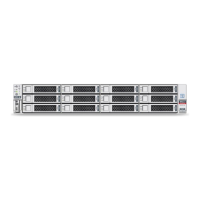
